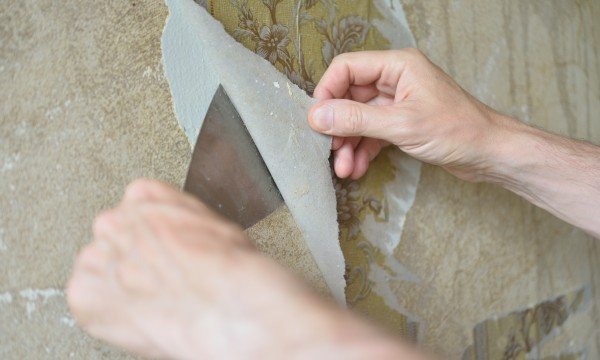Sometimes wallpaper just brings a charm and energy to a room that a coat of paint doesn’t. However, a time-consuming but important step in putting up new wallpaper is removing the old. Here are 10 practical tips to help make this task easier.

10 essential tips
- A solution of equal parts white vinegar and hot water does a good job of softening the adhesive behind old wallpaper – and it’s much cheaper than a chemical remover. The vinegar has a pungent smell, however, so keep the windows open while you’re working with this mix.
- If you choose to use a chemical remover, be sure to wear a proper respirator mask and to keep the room well ventilated.
- Use a nylon brush or pot scrubber on hard-to-remove adhesive. Dip your brush or scrubber in hot water regularly to keep it clean.
- When removing wallpaper or washing down walls, make sure you cover the entire floor with protective drop sheets. Go for non-absorbent plastic sheets rather than canvas sheets or plastic sheets backed with paper, both of which will allow water to penetrate.
- A steamer can be awkward and even dangerous to use, but sometimes it’s the only tool that will do the job. Steamers are effective on stubborn, old, non-strippable wallpapers, and on walls covered in multiple layers of wallpaper. Never steam a drywalled surface, because the moisture from the steamer can damage the wall itself.
- When using a wallpaper steamer, start at the upper part of the wall. Any steam that condenses and runs down the wall will accelerate the adhesive-loosening process on the sections below.
- Never wet more surface area than you can scrape off in 15 minutes. About 1 square metre (about 10 square feet) is usually enough.
- Use a window squeegee dipped in hot water to remove leftover wallpaper paste from stripped walls. Wipe the old paste from the blade frequently with a clean rag.
- When removing old wallpaper, be sure to place the bits and strips on a drop sheet, not on the floor. The solutions used to remove wallpaper can cause dyes to run, staining floors and other surfaces.
- Whatever tool you use for scraping off old wallpaper, take care not to damage the wall surface beneath. Any scratches or gouges that you accidentally make while scraping will have to be laboriously filled in and repaired prior to painting or hanging new wallpaper.
Keep these 10 practical tips in mind to help make removing wallpaper easier.
